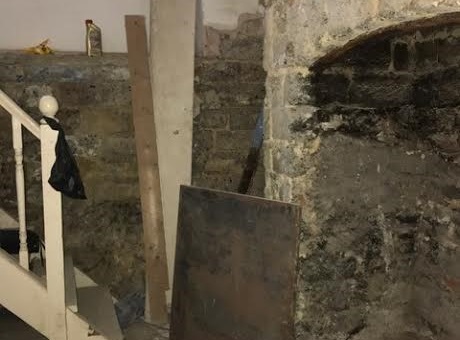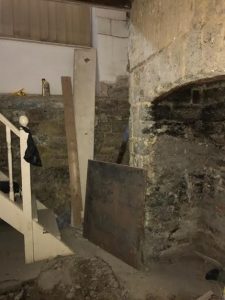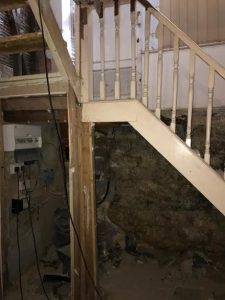By taking this approach, you are allowing the concealed deterioration of masonry, timber and plaster.
If repeatedly concealed, an ingress can degrade surrounding materials to an extent where structural integrity is affected. Not only will this be far more expensive to fix, but there are also the health, safety and liability implications to consider.
On a fundamental level, why would anyone allow the irreparable deterioration of their investment, but also attempt to conceal it ? Would you take that approach to your recently purchased car perhaps, or similarly have so neglectful an attitude towards your health ?
Below: 2015, Unnecessary expenditure was avoided before works began on a cellar conversion in Strood. The property developer had bonded and skimmed elsewhere in the property and damp had soaked through. He had the damp patches covered with one-coat damp seal, but this lasted only a short while. The cellar was inspected and a broken external gully was identified as the cause of damp. The cellar was appropriately tanked and rendered and after the gully was replaced, the recently bonded and skimmed walls dried out. Two years later and the building remains free of ingress. The property developer recently admitted in conversation, that prior to our intervention he was planning to paint the entire house with damp seal.
An completely free, no-obligation inspection and subsequent report by Rochester Building and Damp will clarify the extent to which a property is afflicted by ingress. Once this is ascertained, detailed proposed works are suggested with a singular quoted price. In many instances a presumed severe ingress can be little more than small confined breach of DPC.
Whatever the cause turns out to be, it always pays have it inspected and fixed properly. This course of action will always be cheaper in the long run.



